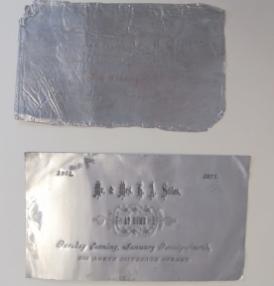These media are most often represented by domestic objects, many of them Rosenbach family belongings, but some collected for use, resale, or display by the brothers. Ceramics range from the 16th to the 20th century and were produced in England, France, China, and Italy. Famous makers include Derby, Wedgwood, and Sèvres. Two centuries of crystal manufacture include chandeliers and tableware from Britain and the Continent. Work in metal consists of Samuel Yellin ironwork, and silver flatware and hollowware dating from the 17th to the 20th century by Myer Myers, Paul Storr, Hester Bateman, Tiffany Co., as well as a range of 19th-century Philadelphia manufacturers and earlier silversmiths from Russia, Ireland, Holland, England, Italy, and France.
Collection Highlights
Developed in the mid-sixteenth century, round-bellied jugs bearing bearded faces were known as Bellarmines, after the famous Jesuit cardinal. Used as decanters in taverns and for domestic storage, the jugs are mentioned in contemporary literature by William Cartwright and Ben Jonson. Although produced in Germany, this example bears Elizabeth I’s…
Traditionally the 10th anniversary is the “tin anniversary” and in the 19th century, invitations to anniversary celebrations might actually be printed on metal. These tin invitations are for 10th anniversary “at-homes” for Mr. & Mrs. R. H. Gratz on January 15, 1861 and Mr. & Mrs. H. A. Stiles on…
This mote spoon is part of a larger set of tea equipage was probably given by Aaron Levy (1742-1815) to Benjamin Gratz (1792-1884), both of whose portraits hang in the Rosenbach house. Although the set is functional, its costly materials and ornate style echo the role of tea and sugar as…
Related Posts
No related posts were found...




